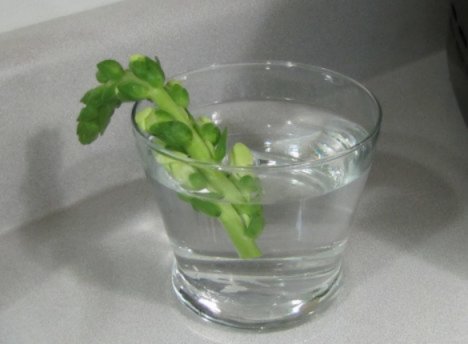4. sLIT OPEN CELLOPHANE SLEEVES AND STRAPPING BANDS
Now you are ready to begin processing your flowers. Open your bottle of Quick Dip (rehydration solution) and pour into a non-metal container. Fill your sink or portable tub with cool water.
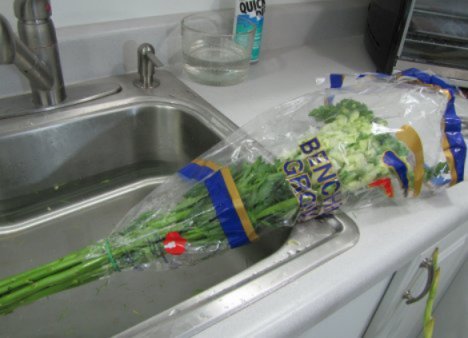
Use a sharp knife to carefully cut any rubber bands that bind the stems of each bunch of flowers. Don't accidentally slice into your flowers stems.
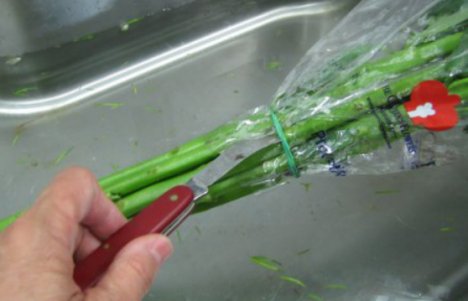
Use the same knife to carefully slit up the cellophane sleeve that is protecting your flowers.
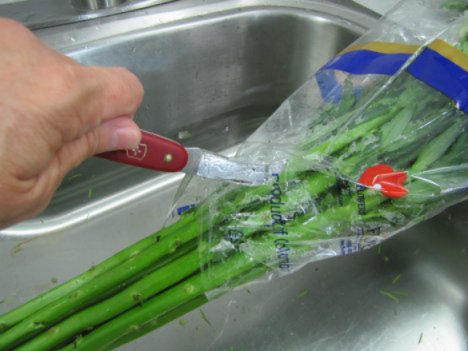
After the bundle is opened, carefully pull the stems apart, separating the heads that may be intertwined.
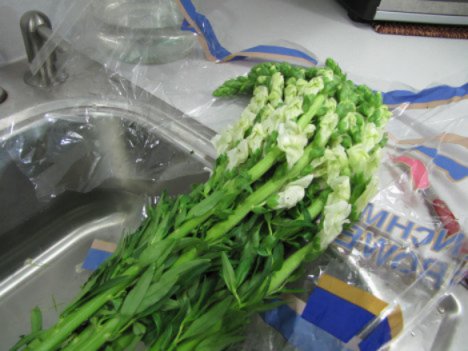
5. cUT ALL FLOWER STEMS UNDERWATER
Remove any debris or foliage that will fall below the water line in your buckets. Water can become contaminated quickly with dirt and leaves in it. Bacteria can quickly shorten the life of your flowers if you don't take care.
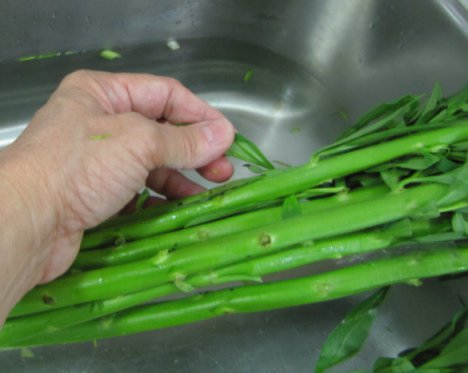
Be sure all the stems are below the water line in the sink or tub before cutting the stems.
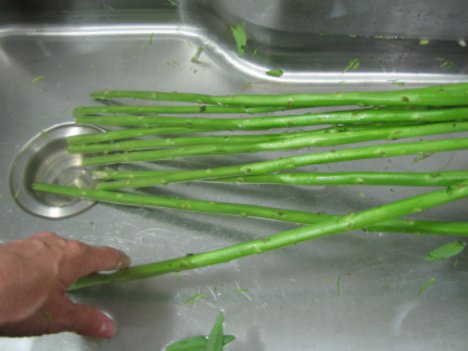
Flowers are like people. Cutting them while in dry stasis makes them take a gulp. You want this to be a gulp of water - NOT AIR. Flowers drawing in air can create an air pocket (or bubble) that prevents water from drawing up to the flower head. This is what often causes the "bent neck" you see in grocery stores or gas stations. It's not that the flowers are old, but just cut improperly.
Use Bunch Cutters or a sharp knife to cut the stems underwater. Do NOT use kitchen shears or regular scissors. These utensils are not fashioned to cut flowers and can crush delicate stems, again, making it hard for the flower to draw water up to it's head.
6. dip cut ends into bowl filled with quick dip
Quick Dip is a professional flower product that is designed to revive flowers and quickly draw water up the stem. It's pretty cheap and well worth investing in. It's the use of flower food (in the proper amount), the rehydrator and the flower sealant that sets professionals apart from amateurs. Professional florists know that these products are invaluable in keeping the flowers at their peak for as long as possible.
Cut the stems underwater, lift out of the water and dip all of the stems at once in the container of Quick Dip.
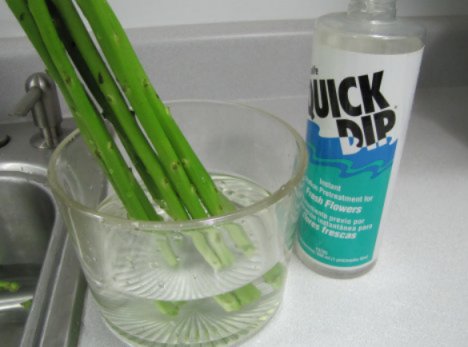
Immediately drop the cut flowers into a bucket of water that has been treated with cut flower food.
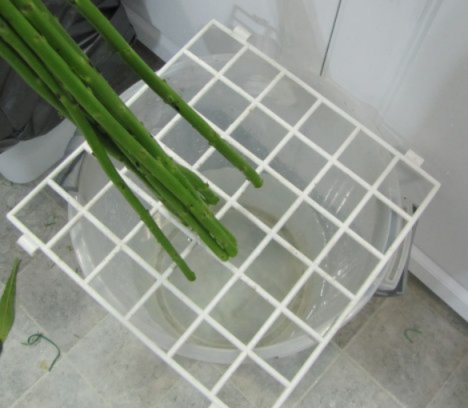
A grid is nice for keeping the taller flowers apart. Flowers that are pressed together can cause bacteria to grow and the blooms may rot in that area. Spreading the stems apart prevents that and lets every bloom open to it's full beauty. This grid is actually part of an old snap together shoe rack found at the local GoodWill. You can also use old cookie racks - basically anything that has holes and can lay across the top of a bucket.
If you can't find anything like this to use, simply use florist greening tape to create your own grid around the mouth of the bucket.
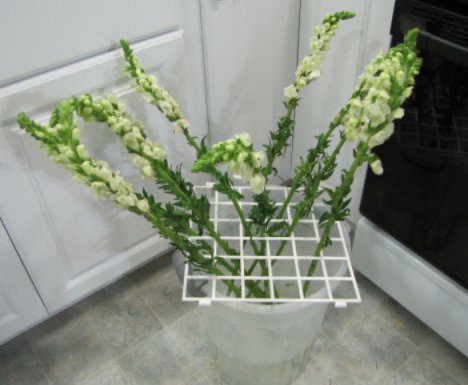
7. set aside broken stems for later use
Expect a few broken stems. These flowers have traveled a long way from field packers to a wholesale warehouse to your front door. Every flower can not be guaranteed to be perfect.
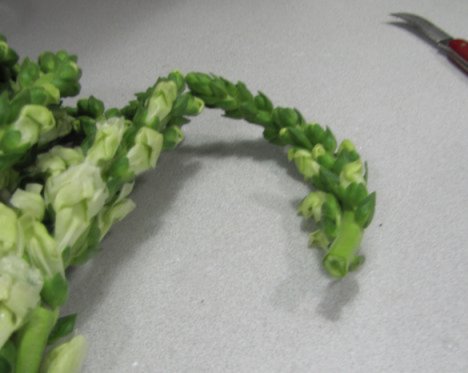
Set aside the broken stems in a glass of water to tuck into corsages, boutonnieres or hand bouquets.
